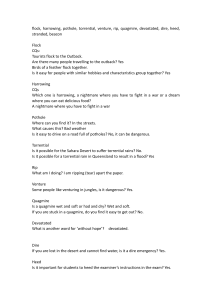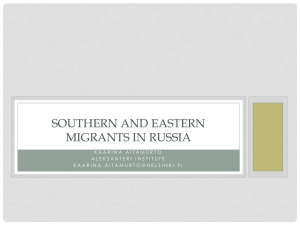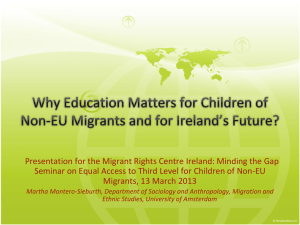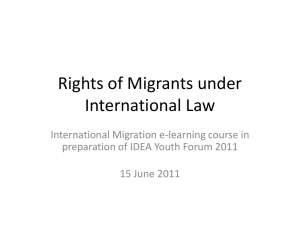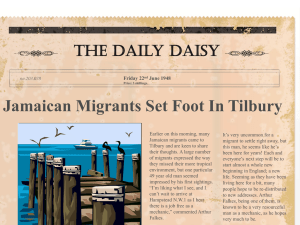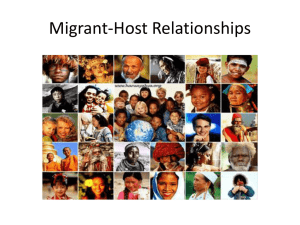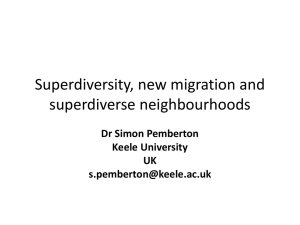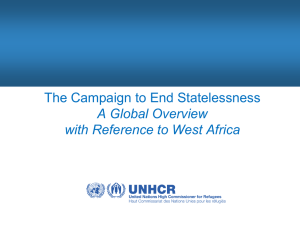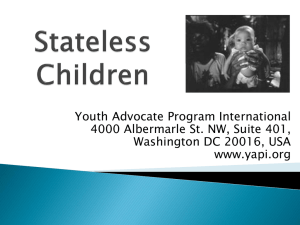Protection of Stranded Migrants
advertisement
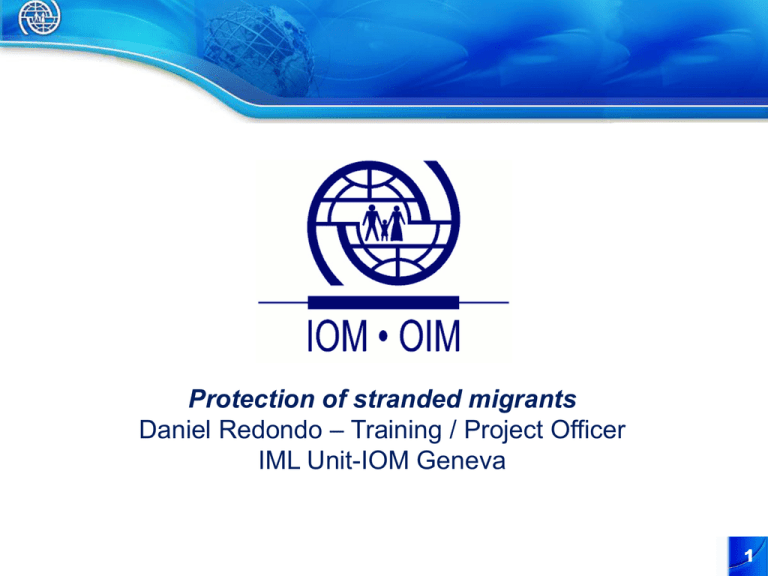
Protection of stranded migrants Daniel Redondo – Training / Project Officer IML Unit-IOM Geneva 1 Objectives • • • • Concept of stranded migrants Some examples Protection at the international level Conclusions 2 • How would you feel if you were locked in a room without possibilities to return home? • How would you feel if you had the opportunity to leave, but you were not admitted in your own house? 3 Concept of stranded migrants • No internationally recognized definition • Different from a Stateless person: – “A person who is not considered as a national by any State under the operation of its law” Art 1. UN Convention relating to the status of stateless persons, 1954 4 Other differences between stranded and stateless • Similarities: both are individuals in need of international protection • Differences: stranded do not enjoy of an international recognition. 5 How does one become “stranded”? • Irregular migrant in a State, • During times of war or humanitarian crisis and cannot return home, • While in transit to another State • Other 6 • Migrants find themselves legally “stranded”, given that they cannot or are unable to remain lawfully in the country in which they are physically staying, or cannot be moved to another country or return to their home country. 7 Examples • The complex legal and political factors underlying the case of some 50,000 Mauritanians who were declared stateless in 1989 and expelled many to Senegal. They have since remained there, initially as refugees, and later with an indeterminate status while they await active steps by the Mauritanian authorities to restore their citizenship and ensure their safe return. • Nationals of west and east African countries arrived in Central American countries since 2009, many were originally in transit towards the United States, however they ended up stranded in different countries such as Costa Rica, Nicaragua and Panama without possibilities in the short term to return. 8 • In a vast majority, the problem is that their nationality is not effective in enabling them to return home or in giving them diplomatic protection and assistance, while they are abroad. • Stranded migrants find themselves without protection from their country of nationality and without international protection (although we have studied States are obliged to protect and recognized their nationals). 9 Challenges • There are no numbers (population remains in the shadow) • Difficulties to identify them, lack of awareness on the topic • Lack of international protection by States, therefore the international community is called to act upon. Some States refused to accept their nationals back. • Realities stranded migrants faced on a daily basis • Many end up requesting asylum, in some cases as they need to, in some other cases just to prolong their stay. 10 Challenges • Many are held in detention for long periods (even years). Some countries allow prolonged or indefinite detention in their legislation. • Stigma and discrimination against some of them, perceived as “unremovables” or “lifers” denying their humanity. • Some received a removal order, which is most cases is inapplicable due to the complexity of the cases. • Some are leaving poverty or conflicts behind • Infective protection by country of nationality or lack of a timely response of consular and diplomatic authorities to support their own nationals • Migration might take up years and they could be stranded over the same period of time • In practice some face indefinite detention, including women and children 11 Special needs • • • • Children Women Victims of trafficking Other potentially vulnerable groups 12 States` duties • Human rights Committee (monitoring ICCPR): “The enjoyment of ICCPR rights “is not limited to citizens of State parties but must also be available to all individuals regardless of nationality or statelessness such as asylum-seekers, refugees, migrant workers and other persons, who may find themselves in the territory or subject to the jurisdiction of the State party”. • Other rights recognized in the core human rights instruments and principles of international law 13 • Some current mechanisms to address this issue; – Through readmission agreements – Voluntary return – Commitment of States and of the international community • Always limited by non-refoulement 14 Conclusions • No international legal framework nor an internationally recognized definition in spite of the many cases of stranded migrants • Lack of information/data on the status • Need for States and individuals to take actions to provide solutions, either through voluntary returns or protection at the State level. • Migration should be considered from human rights based approach, and less from a securitybased approach 15
